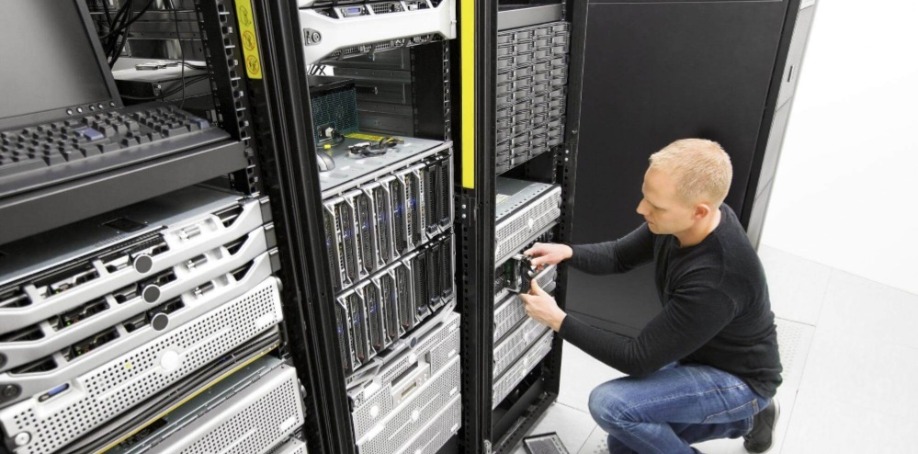
AV over IP offers many benefits for businesses and organizations of all sizes. Still, many consumers still have hesitations about implementing AV over IP.
If vendors don’t address these challenges early, they can wind up with a host of additional problems. From failing to take advantage of available capabilities, to facing technical difficulties, here are the most common hurdles AV over IP vendors face.
Selling AV Over IP
The first challenge a vendor must face is pitching the end user. While networked AV is a major industry trend, it brings with it a great deal of fear, uncertainty and doubt, writes S. Kyle Davis at Samsung’s Harman blog.
“Whenever there is a lot of clamoring for attention in a technology space, it’s hard to differentiate between what matters and what’s ‘fake news’ and much ado about nothing.”
It may be easy to tout the benefits of AV over IP, but QSC product manager Martin Barbour warns vendors against selling AV over IP as an easy solution. It’s easy for customers to get frustrated by the thought of spending even more money for a dedicated AV network.
“From an end-user perspective, they are investing millions of dollars in a site-wide network infrastructure that is modern, robust and designed to keep all their IT assets moving forward.”
Barbour says that the pros and cons should be weighed carefully. This will help end users feel as though their concerns are taken seriously.
Vendors should be careful how they explain and market this technology. Listening to the concerns of customers is also important for a successful installation. Skilled vendors dispel myths and take precautions to ensure they choose the right solution for the customer.
Bandwidth Considerations
It’s no secret that AV over IP has advantages over traditional AV. But as ClearOne sales director Lewis Eig notes, there are a number of challenges that prevent organizations from adopting the new technology. One of the major issues Eig lists is bandwidth.
Since AV over IP works over the internet, any location seeking to implement it will require the proper bandwidth. If this issue isn’t addressed at installation, it can lead to problems down the road. It’s also important to note that different solutions require different bandwidth levels. Some rely on 1GB ethernet speeds; others need 10GB.
“The bandwidth guides the installer on which kind of IT infrastructure is needed,” says audiovisual distributor CIE Group.
Bandwidth is an important element in AV over IP — one that shouldn’t be overlooked. Chris Fitzsimmons, a product manager with Biamp Systems, notes the dangers of exceeding bandwidth. “Should the stream exceed the available bandwidth, we’ll start to see packets of data tossed over the side.”
Losing important data is a serious concern of many organizations. Still, there are things that can be done to make sure this doesn’t occur. One option is to reserve a certain amount of bandwidth for non-AV purposes. Or, the AV can be hosted on a separate network entirely.
Bandwidth requirements can vary depending on how the client intends to use the technology. AV vendors should make sure the customer has a clear idea of what they’ll be using it for.

Addressing Security Requirements
From the beginning, security has been a big concern for networked AV. Many people are worried about hacking and data breaches, since information is transferred over the internet. For companies that deal with confidential information, this concern can be reason enough to reject the technology.
This is why it's so important to address security concerns early and often. AV over IP has a number of protocols in place to prevent breaches and hackers, and it's important that clients know how such systems work.
One way to do this is through encryption. AV over IP encryption “prevents eavesdropping and hijacking in the highly unlikely event an intruder is able to gain access to a dedicated IP network or an isolated VLAN segment,” according to a ZeeVee whitepaper.
Vendors should make it clear that networked AV has security protocols in place. Additionally, hacking an AV system doesn't necessarily mean the entire system is compromised.
“It is impossible to hack a network or affect other aspects of system operation by tapping into a native link connection,” says Pro AV retailer Magenta Research.
Acknowledging IT Concerns
IT departments aren't always on the same page as AV professionals. “IT departments typically see AV equipment as a burden rather than a part of their responsibilities,” notes video communications provider AVI-SPL.
AV professionals need to understand potential tensions so they can address it early.
“IT managers increasingly expect AV systems to be integrated with enterprise data networks, but they may not be familiar with the specific requirements of audio-over-IP systems and common AV practices,” notes Audinate, creator of DANTE (digital audio network through ethernet) protocols.
They add that AV professionals are frequently not aware of IT concerns and goals. This can make installers ill-equipped to handle such issues.
When it comes to AV over IP — a new and potentially intimidating technology — disagreements can become heightened if healthy communication isn't established.
AV over IP can be exciting for IT professionals if they understand its benefits. Since it works over a system they're familiar with, it can make their jobs easier. When AV professionals collaborate with IT departments, it's more than possible to get everyone on the same team.
-1nhsw3.jpg)
Installation and Cost Challenges
Other concerns regarding AV over IP involve installation and cost. An inability to stage the network before it goes live, for example, is one of the greatest worries companies face during AV over IP installation.
According to Steve Greenblatt, president and founder of Control Concepts, AV over IP solutions can't be staged like traditional systems because they rely on a network that likely isn't available for testing.
“Staging can still be extremely valuable in vetting control functionality, equipment integrity, and wiring; however, there is no way to truly simulate the behaviors and challenges of the actual system without access to the client network. Additionally, device setup, including Ethernet switch settings, will likely need adjustment when transitioning from test network to the client's environment.”
Installation issues can also be posed by older buildings. One of the hardest parts of AV over IP installation is implementing wiring in historic buildings, where old construction and building codes pose challenges to wiring. Such a challenge was faced at Mills College in Oakland, California, which wanted to update a main venue with a range of media devices and audiovisual capability.
However, narrow pathways, difficult-to-access areas, historic-status restrictions and cost all made these goals difficult, explains Guy Campos at AV Magazine.
After a strategic AV over IP integration with customized solutions, the college now has a rolling stage-manager podium that incorporates a touch panel, computer monitor and laptop input. It can roll around onstange or be moved elsewhere, allowing the stage manager to feed a projector, view the output and manage the intercom — all from a single connection.
Cost is another factor to consider. While AV over IP is remarkably cost-effective, price still needs to be addressed. As CEDIA technical research director David Meyer says, “AV-over-IP systems may cost more than a basic matrix solution, but the flexibility might be something that your clients would be keen to invest in.”
Articulating how the investment will save money over time is key to selling customers on the value of AV over IP.
Images by: Kjetil Kolbjornsrud/®123RF.com, Teera Pittayanurak/®123RF.com, Yanyong Kanokshoti /®123RF.com


